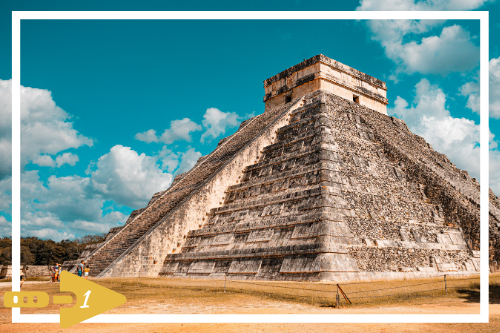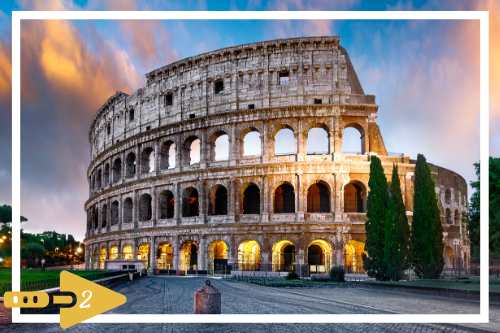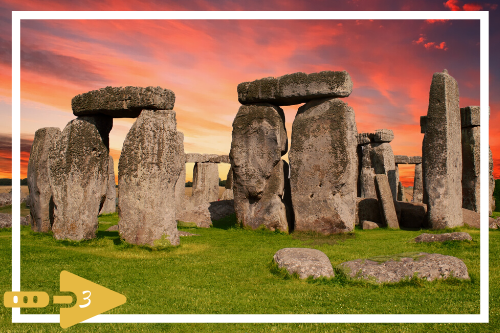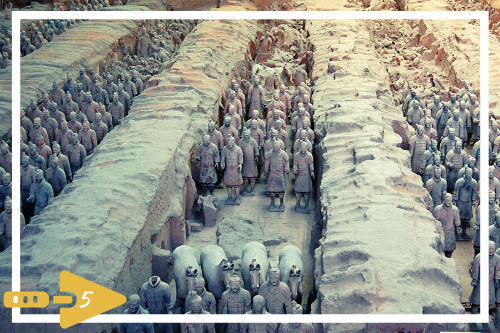
Layers of Time
Dr. Arty Fax’s Archy Facts is a weekly blog introducing kids (currently stuck at home) to the exciting world of archaeology!
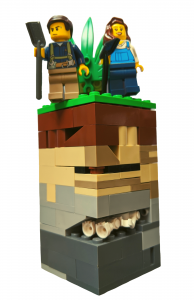 Now that we know how archaeological sites become buried over many years, it’s time to talk STRATIGRAPHY. Stratigraphy is the study of the natural layering of the ground over time. As archaeologists excavate, they are carefully digging down through these layers, usually one at a time.
Now that we know how archaeological sites become buried over many years, it’s time to talk STRATIGRAPHY. Stratigraphy is the study of the natural layering of the ground over time. As archaeologists excavate, they are carefully digging down through these layers, usually one at a time.
Do you think the layers are older or younger the deeper you go?
 Do you know what archaeological site is pictured at the top?
Do you know what archaeological site is pictured at the top?
Scroll down to find out!
The further down you dig, the farther back in time you are. This is the LAW OF SUPERPOSITION, which basically states that the newer stuff is on top of the older stuff.
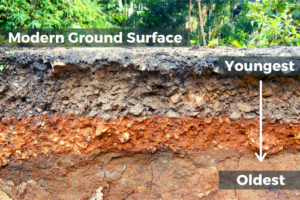 Sometimes is it impossible to date an artifact itself, so archaeologists may use stratigraphy to help identify how old something is. This is a RELATIVE DATING method. It can only determine that an artifact found in one layer is of similar age to other artifacts in the same layer. It is also older than artifacts found in layers above, and younger than artifacts found in layers below.
Sometimes is it impossible to date an artifact itself, so archaeologists may use stratigraphy to help identify how old something is. This is a RELATIVE DATING method. It can only determine that an artifact found in one layer is of similar age to other artifacts in the same layer. It is also older than artifacts found in layers above, and younger than artifacts found in layers below.
Archy Facts @ HOME ACTIVITY
Layers of Time Activity Sheet
![]() Terracotta Warriors at Qin Shi Huang Mausoleum
Terracotta Warriors at Qin Shi Huang Mausoleum
Xi’an, China
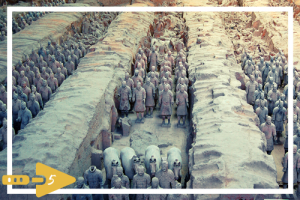
Fun Facts:
The Terracotta Warriors depicts the armies of Qin Shi Huang, the first emperor of China. It is part of his tomb complex that stretches over 20 square miles! Construction began in 246 BCE and there are over 8,000 life-size statues. No two are alike! Experts think it took over 700,000 workers about 40 years to finish.
Read more about the Terracotta Warriors here and here.
Want to learn more?
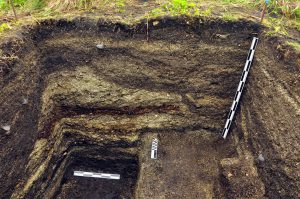
Check out:
Archaeology 101 Exhibit: How Old Is It?
Audio Player


